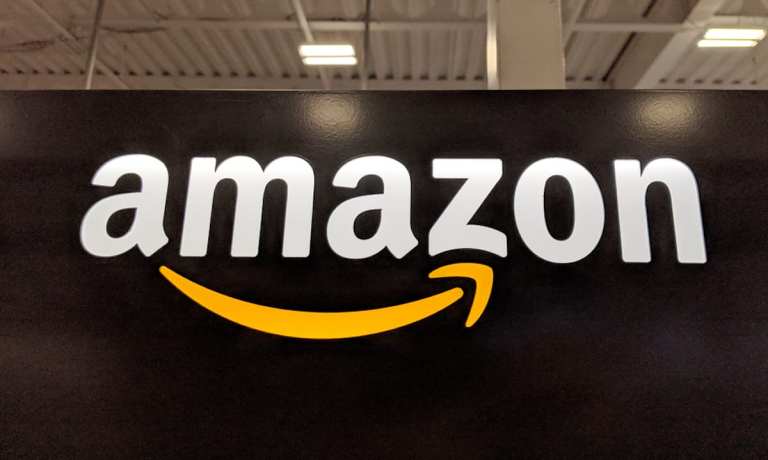Whole Paycheck: Amazon Converting Malls As Walmart Takes On Banks

A week ago in this space, PYMNTS talked about how the two titans of retail, who have found themselves in a market share dead heat, are each doing more to embrace the strength of its rival. In Amazon’s case, that means addressing the enormous disadvantage it faces compared to its counterpart’s 5,300 domestic retail locations. For Walmart, it means trying to close the comparably huge deficit it faces in online sales.
As this week’s Whole Paycheck Tracker reveals, Amazon is continuing to tackle that real estate problem, but Walmart took a different tack by taking on the strengths of a different rival: banks.
The Mall Conversion Trend
It is more than a little ironic to see Amazon buying up the same vacant and struggling mall space that was emptied by its own growth over the past 20 years. And yet, this trend is far from isolated or sluggish, as it has been done two dozen times already and appears to be accelerating.
According to Coresight Research, Amazon has converted 25 shopping malls into distribution facilities between 2016 and 2019, Yahoo! Finance reported, noting that the online giant’s spate of brick-and-mortar buying is expected to quicken. Not only has Amazon’s digital dominance continued to grow, but the industry-wide shutdowns and store closures brought on by an indiscriminate and merciless pandemic last year have only worsened the condition of the nation’s retail property owners, which are reported to be sitting on record-high vacancies.
By that measure alone, it is probably a good time for Amazon to be shopping the market, but it remains to be seen whether its real estate binge will undergo any sort of pivot toward adding actual storefronts or showrooms, rather than just retro-fitting mall space to broaden its armada of 110 domestic fulfillment centers.
There’s also a parallel real estate expansion going on in Amazon’s grocery business, as its one dozen Amazon Fresh stores in California and Illinois expand eastward to Washington, D.C., Virginia, Maryland and Pennsylvania. The company has even begun posting job notices to attract hundreds of workers.
Although Amazon already has a 500-store footprint with its Whole Foods chain, the four-year-old acquisition has barely put a dent in Walmart’s food and beverage dominance, as F&B remains its single largest category, accounting for roughly half its revenue.
Despite rampant speculation, Amazon has so far not announced a major nationwide rollout plan for its Fresh stores, but appears to be moving forward with a piecemeal approach for the time being.
Walmart Takes on Banks
As Amazon moves its chess pieces and evolves its storefront strategy, the boys from Bentonville are surely taking note, especially since they have already seen leadership positions evaporate in three other key retail categories in the past five years.
And yet this week, Walmart’s move to trademark its Hazel brand enroute to becoming its own bank or FinTech may have seemed out of step to some observers, given Amazon’s transparent effort to encroach on its turf.
But on closer review, when considering that 90 percent of Americans already live within 10 miles of a Walmart, the foray into finance starts to make sense — it could prove to be the grease needed to help grow its sales, increase basket size and retain loyal customers, while attracting more affluent customers to its stores and website.
Although Walmart’s banking ambitions are still shrouded in secrecy, its hiring a month ago of the two Goldman Sachs executives who launched and built the Wall Street firm’s Marcus consumer banking business was the first sign that it was serious about moving ahead with its plans.
The fact that Walmart’s second not-so-subtle hint on the banking front occurred in the very same week that Instacart and DoorDash announced plans to roll out their own credit cards should erase any doubts that Hazel is happening.
Keeping an Eye on India
As the two retailers’ domestic tussle plays out, their international competition is also intensifying — particularly in India, the biggest overseas battleground for the two. For Amazon, that came in the form of an annual progress report that provided a rare glimpse into not only how far its local operations have come in the past 10 years, but also how they have been accelerating.
Specifically, Amazon said it has digitized 2.5 million small and mid-sized businesses over that time, created one million new jobs and produced more than $3 billion worth of exports, which it said are “witnessing great momentum in India.”
“It took [us] three years to clock the first billion in cumulative exports, the second billion came in 18 months and the third one has taken just 12 months,” the company’s report said. In addition, Amazon said it is on track to fulfill the long-term commitments made a year ago to reach 10 million digitized businesses, $10 billion in exports and one million additional jobs by 2025.
At the same time, Walmart’s Indian marketplace Flipkart is moving ahead with its own growth plans, and is reportedly mulling an IPO in the U.S. estimated to be worth $35 billion, which would give it the capital needed to fund its expansion and delivery service into 70 new cities. Flipkart was founded in 2007 and marked Walmart’s biggest purchase ever when it was acquired by the retailer in 2018.